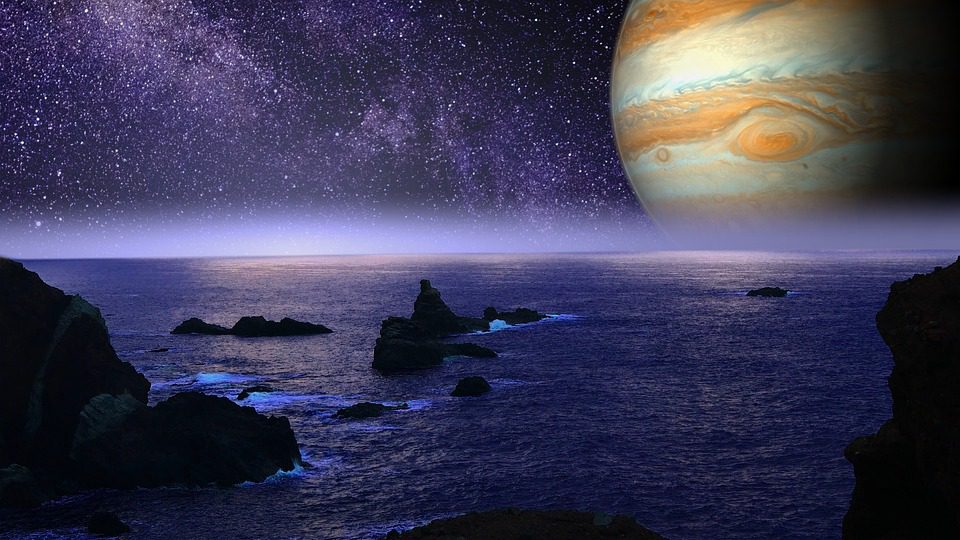There may be an arctic ocean under Europa’s frozen crust where saltwater is delivering oxygen, which might help support extraterrestrial biology, reported a group of experts.
In their model, oxygen travels on saltwater beneath the moon’s “chaos terrains,” regions composed of cracked and ridged terrains as well as ice blocks covering a fourth of the cold globe. This notion has been put out by many, but the authors put that to the test.
Not only is the conveyance feasible, but the proportion of oxygen delivered into Europa’s oceans might be on par with the abundance of oxygen already in Earth’s seas.
The discovery of water & oxygen on Europa, as well as compounds that may function as nutrition, has made it a prime candidate for the search for extraterrestrial life. Water plus oxygen are created by sunshine and energetic particles from Jupiter impacting the frozen face of the satellite. However, the moon’s ice crust, which is thought to be roughly 15 miles deep, acts as a boundary between the mix.
It is hypothesized that chaotic terrains arise just above locations where Europa’s ice layer partly melts, resulting in brine, which may interact with oxygen on the surface. After the chaotic landscape was formed, the scientists developed a computer model to depict what transpires in the brine. As a “porosity wave,” the brine drains by temporarily widening the gaps in the ice, which allows the brine to travel through before shutting up again.
Available evidence suggests that oxygen concentration in Europa’s water can vary by a magnitude of 10,000 during the course of the planet’s existence.
According to the most optimistic estimates, the oxygen concentrations in Europa’s oceans are comparable to those found in Earth’s seas – raising hopes that the buried water may be able to host biology as a result of the presence of oxygen.
The findings were published in Geophysical Research Letters.












Leave a Reply